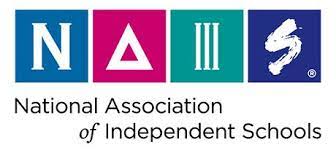Rohith Tsundupalli ‘24
Students have provided their teachers with feedback via Google Forms this year. Prior to the 2018-2019 school year, faculty members received student comments through a paid, third-party software called Folio. EA temporarily opted not to mandate opportunities for student feedback for the 2018-2019 school year, but has reinstated the requirement this year. “This change was a long time coming, but of course, with last year coming to a screeching halt, things got pushed back further,” states Head of Upper School, Michael Letts.

Photo courtesy of Ashley Kennedy ’22
Folio is an online feedback site that encourages professional development across schools. It provides anonymous feedback to the administrator and “had limitations,” according to Letts. Additionally, Folio required a membership, meaning that Episcopal had to pay the site to generate forms.
The financial obligation proved to be an issue in the long run. Letts mentions that “there was a large committee a few years ago. Administrators from all divisions were thinking about a faculty review and growth system that would incorporate student feedback as an alternative to Folio.”
Google Forms, another anonymous tool used to collect feedback from students, allows teachers to base their questions on how the material has been taught so far. These forms come at no cost and offer administrators more options to customize their questions.
“The one thing that I particularly enjoy about the new system is that it is not a purchased software application; we can adjust it to build it as we need to. It was developed by our faculty, and in that sense, it fits our culture more and our objectives as a school better than Folio did,” Letts says.
Although the systems differ in several ways, they each fundamentally strive to help teachers understand how they are doing. “The two essential questions for any feedback form is, ‘What is going well?’ and ‘What can be improved?’” Upper School Math teacher Dr. Tom Goebeler explains. “Students tend to answer these questions quite well, especially when this type of feedback is sent anonymously to the teacher.” Lee Billmyer, an Upper School English teacher, agrees, saying that “basically the same questions are asked each time the system or form is ‘updated,’ but the wording of those questions becomes an editing challenge to solicit helpful rather than harmful responses.”
Anonymous student feedback forms, no matter which site is used, do pose some issues for the teacher. “One of the drawbacks of any feedback form is that it is not a dialogue. It is static. You cannot make inquiries and a discussion about [the feedback],” says Goebeler. He continues, “There are times when I think if something means this or another thing. I just wish I could discuss it with the student.” Billmyer also wonders if anonymity is beneficial for students to give honest feedback. She asks, “Does an anonymous feedback form empower students to criticize their teachers and find fault for the sake of completing bubbles on a scale?”
Students were also divided on the issue. Daniel Demessie ‘24 states, “I do not believe that the site changes how we give the information. Folio may have been easier to use, but I feel that the overall goal of these websites is to give feedback, which I think both sites succeed in making it easy to do so.”
On the other hand, Matt Lange ‘24, another student who has used both sites, says that “Google Forms could add more ways to answer questions. It can be very boring to write paragraphs to respond to questions.” Despite this, he says, “I enjoyed Folio much more than Google Forms. Despite the length of their forms, I think that they asked better questions. If the school wants an honest option from students on their teachers, I think paying for Folio is totally worth it.”